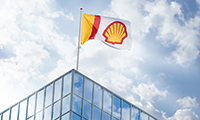Outlook
We continuously seek to improve our operating performance and maximise sustainable free cash flow, with an emphasis on health, safety, security, environment and asset performance, as well as our ethics and compliance principles. In order to achieve that, we strive for highly qualified and motivated employees.
- We are on track with our outlook of annual organic free cash flow of between $25 billion and $30 billion by 2020, at a Brent crude oil price of $60 a barrel (real terms 2016).
- Our capital investment outlook remains between $25 billion and $30 billion a year until 2020. We see $30 billion as a ceiling, even in a high oil price environment.
- Following the successful delivery of our $30 billion divestment programme during 2016-18, we will continue with an annual average outlook of at least $5 billion of divestments in 2019 and 2020.
- Following the delivery of an additional $10 billion of cash flow from operations between 2014 and 2018, key project start-ups and ramp-ups are expected to generate an additional $5 billion cash flow from operations between 2018 and 2020, assuming $60 per barrel (real terms 2016) and mid-cycle Downstream industry conditions. We will remain highly selective on new investment decisions throughout 2019 and beyond.
- We launched our share buyback programme in 2018. Our intention remains to buy back at least $25 billion of our shares by the end of 2020, subject to further progress with debt reduction and oil price conditions.
We fully support the Paris Agreement’s goal to keep the rise in global average temperature this century to well below two degrees Celsius above pre-industrial levels and to pursue efforts to limit temperature increase even further to 1.5 degrees Celsius. We have set a long-term ambition to reduce the Net Carbon Footprint of our energy products, measured in grams of carbon-dioxide equivalent per megajoule consumed, by around 20% by 2035 and by around 50% by 2050, in pace with society. To operationalise this long-term ambition, we started setting specific Net Carbon Footprint targets for shorter-term periods. The first target has been set for a three-year period. The target and other measures will be linked to our executive remuneration and we have introduced an additional performance condition in our Long-term Incentive Plan (LTIP) in 2019 linked to the transition to lower-carbon energy. Further details can be found in the Directors’ Remuneration Report [A].
This outlook does not include the impact of the application of the new standard IFRS 16 Leases, which is effective as of January 1, 2019.
[A] The Directors’ Remuneration Report is part of Shell’s Annual Report and Form 20-F.
 Our businesses and organisation
Our businesses and organisation
 Overall highlights in 2018
Overall highlights in 2018
 Projects
Projects
 Financial data
Financial data